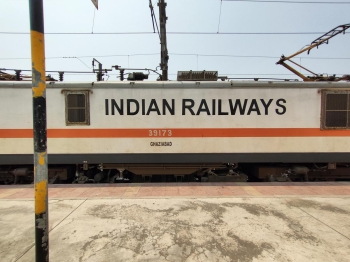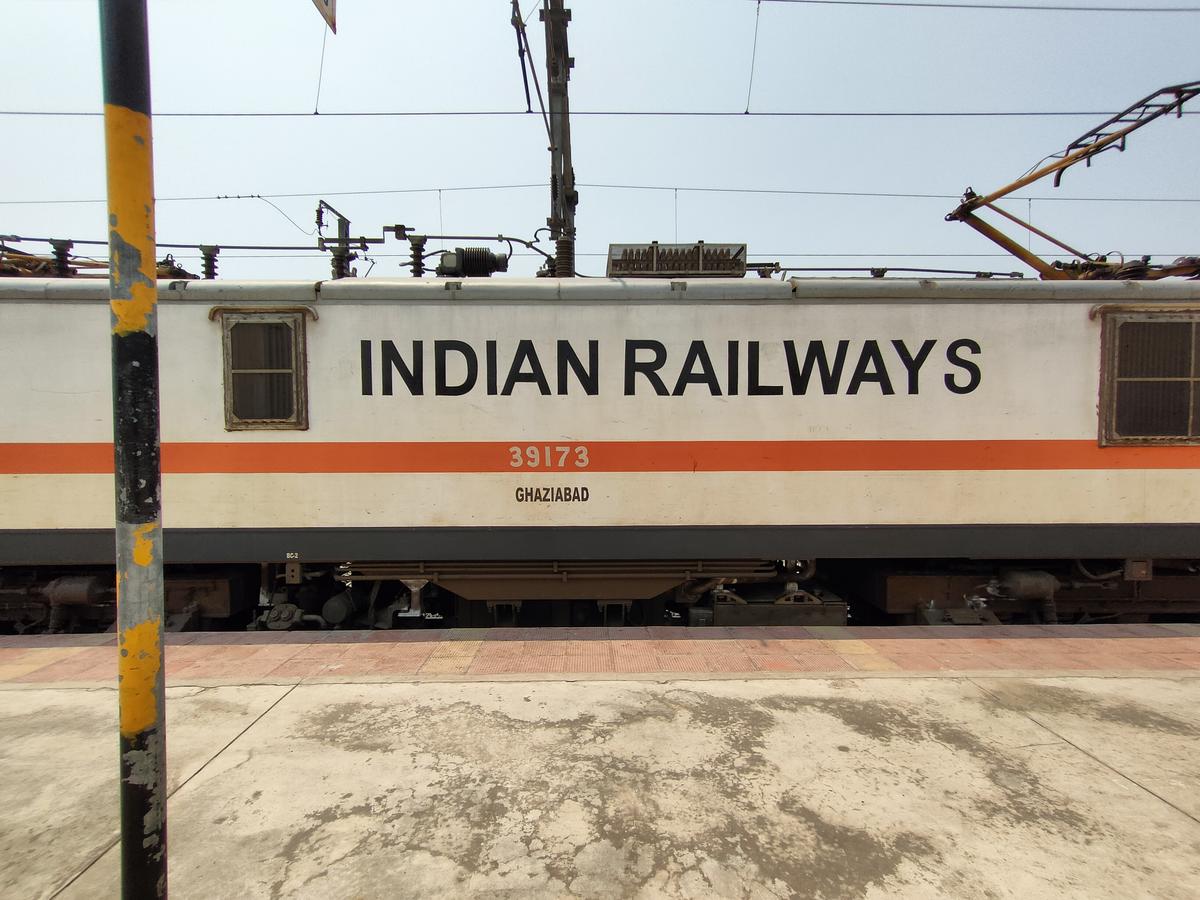
.jpg) Mathew John
Mathew John

When contemplating the subject of safety on the Indian Railways (IR), I am reminded of a French writer’s observation more than 150 years ago: “The more things change, the more they remain the same.” He insinuated that although a lot of changes appear to be happening, there has been no significant transformation for the better. Likewise, despite huge advances in technology, a more skilled workforce and greater resources, safety on IR remains an area of darkness and precarious unpredictability. The trumpeted statistics of decline in train accidents through the decades is primarily the upshot of technology rather than of thoughtful and carefully strategized policy.
Saddled with the most intricate and involved inter-dependencies, safety of the IR is the end-product of the cohesive fusion of its myriad parts – the front-line staff, permanent way, rolling stock, signaling gear, even the public which is more obtrusive on the Railways than in most other transport modes. And the toughest challenge is that you can’t take your eyes off the ball. Safety is enhanced only when it is the primary focus of an organization.
The British ushered in the Railways, along with a management style that advocated railroading (the etymology of the word is a no-brainer) and dire punishments for instilling staff discipline and getting work done. Although the Brits were thrown out long ago, their punitive template has been embraced by the indigenous sahibs and carries on to this day. Following the horrific Balasore accident, we heard the Railway Minister echo the tired admonitory shibboleth about inculcating a culture of “zero tolerance of accidents’’. The PM, during his visit to the accident site, had only one message to convey – that those found guilty would be severely punished.
Significantly, in the wake of the Balasore tragedy, not much has been said by the political brass or the railway management about issues relating to workplace culture, adequacy of safety category staff, staff morale or working conditions, as though these matters are inconsequential to safety. The large number of vacancies in the safety categories, the replacement of railway staff with ill-paid and undependable contractual labour, even in safety-related activities, and the endemic problem of punishing over hours of work particularly among loco pilots, bode ill for safety. An organization where there is many a slip between the rules and actual practice, and where a “work to rule” threat constitutes the biggest nightmare for the management, cannot possibly be the ideal workplace.
As a former Railway man, I could not help but feel a sense of déjà vu when reading about the turbulence and finger-pointing on the Indian Railways (IR) in the wake of the Balasore accident. We have come a long way from the time when moral responsibility for a catastrophe was shouldered by the conductor of the orchestra. Lal Bahadur Shastri resigned as railway minister in 1956, taking full responsibility for a major accident. And since then, two more railway ministers have acted honourably when major accidents have happened by resigning and not merely offering to resign – Nitish Kumar in 1999 and Suresh Prabhu in 2016. The present Minister, like many of his predecessors, is guilty of “deflection”, which is a term in psychology that involves diverting blame onto someone else to preserve one’s own position and self-image. The current regime has mastered this art!
While front-line staff guilty of dereliction that cause accidents are deservedly punished, major train accidents invariably result in a public outcry for assigning culpability at the higher echelons of management. This is when the exercise becomes random and mercurial. Post the Balasore tragedy, there has been a flurry of penal transfers among the top management of the South-Eastern Railway, including the General Manager. In what is a blatantly capricious, unjust punishment, one of IR’s outstanding engineers, the Additional Member (Signal) was ignominiously shunted out of the Railway Board for the failure of one of the thousands of staff under his nominal control. Clearly, mollifying an outraged public with well-advertised, albeit unfair, punitive action against the top management is more important than worrying about the adverse impact of such patently unjust punishments on railway staff morale.
Early this month, the CBI arrested three Railway signaling staff of the Balasore jurisdiction and charged them under IPC sections relating to culpable homicide not amounting to murder, causing disappearance of evidence, and endangering safety owing to wilful negligence. With the trade unions emasculated, there have been no protests against this unprecedented draconian action, which conveys the dire message that all front-line staff held responsible for a major accident can realistically expect to be arrested. Railway staff morale is understandably at an all-time low.
The stifling culture of intimidation and licentious retribution has engendered the most deleterious repercussions for safety. The almighty fear of punishment has spawned the dangerous practice of concealing failure, and “doctoring” safety-related statistics, whenever possible. The widespread statistical subterfuge vitiates analysis of the root causes of accidents and impairs the railway management’s capacity to accurately assess risks and establish the priorities for determining safety investment and policy.
To cite an example, when the Railway Safety Review Committee (1999-2001) under the legendary Justice H R Khanna was examining safety issues on IR, an intrepid young officer of the South-Central Railway(?) gave a “bare all” presentation, proving beyond a doubt that CRT wagons were four times more prone to accidents than other types of wagons in the fleet owing to genetic structural instability, a technical glitch that the management was oblivious of for years due to rampant manipulation of accident figures. Thankfully, the management took immediate action on the Committee’s recommendation to rapidly phase out these wagons from the system. The lesson learnt was that ignoring or sweeping “indicative” accidents (unsafe acts that do not result in accidents) and other infractions under the carpet can ultimately lead to the Balasore type of disasters because the basic causes of both major and minor accidents are the same. Nevertheless, fudging of safety-related statistics continues apace.
It goes without saying that railway safety must be an all-encompassing mission, “an envelope surrounding and fundamentally influencing everything else.” Unfortunately, the railways have never been on top of safety, but this Government has gone way beyond ordinary neglect of safety and indulged in reckless brinkmanship that has adversely impacted the entire railway ecosystem.
In its zany obsession to showcase radical transformation of the IR, this government has wrecked systems and traditions that have sustained IR since Independence. The insane sweeping revamp of the management structure is a crippling blunder and portends a laissez faire, apathetic ethos supplanting the passionate loyalty and commitment to one’s department that was hitherto the distinctive management style.
The subsuming of the Railway Budget into the General Budget is irrational, but is there a method in the madness? With financial autonomy ended, so has the hitherto intensive public scrutiny of Railways’ finances, and, resultantly, so too has fiscally responsible behaviour gone out of the window. Camouflaged within the humongous General Budget, the Railways’ profligacy is now unchecked, because of which the premier transport organization has turned loss-making since 2016, despite massive injection of funds, unremitting traffic demand and unprecedented industrial peace.
While perfunctory attention is paid to the life-and-death problems relating to routine maintenance, replacement of overaged assets, timely replenishment of safety category staff, improved working conditions, the overriding obsession of this government, apart from the whimsical cataclysmic changes in systems, has been on glamorous, showboat projects.
This government has clearly shrugged off the corporate mission of IR to provide safe, efficient, affordable, customer-focussed, and environmentally sustainable transportation in an efficient and cost-effective manner. Its lopsided priorities are reflected in the profligate spending on breakneck electrification of the entire BG system without a proper cost-benefit analysis, a needless prodigality that has aptly been called “the demonetization moment” by an anguished, recently retired colleague. Because of this ill-conceived project, up to 6000 diesel locomotives and their extensive support infrastructure, will soon become redundant.
The plan to run 400 pairs of Vande Bharat trains in three years is financially imprudent. This is another highfalutin white elephant that is being executed at frenetic pace, without much thought about the adverse implications for line capacity, for other ordinary train service requirements, apart from technical issues relating to power consumption and the need for creating exclusive maintenance facilities. Much like the Bullet Train vanity project that is financially ruinous and completely at odds with the needs of the common man, the glitzy Vande Bharat trains cater only to the well-heeled, the least expensive seat being almost four times costlier than sleeper class fare in a super express train. A brutal capitalistic ethic reigns behind the veneer of sabka saath, sabka vikas socialism!
Old hands remember a time when the Indian Railways followed a different script. As railway ministers, Madhu Dandavate and George Fernandes travelled by train service. The common man’s train – the Jan Shatabdis – were the focal point of the railway management in the losing passenger segment of Railways’ business. In the 1980s, one of the legendary general managers of IR, D Hariram, got the oldest former railway employee in Gorakhpur to inaugurate a new passenger train service. Former Railway Ministers visited the injured victims of major train accidents in the hospitals but, as a rule, avoided hanging around accident sites as they knew that their presence deflected attention from the critical task of restoration. I fear that such stirring institutional memory is being forgotten and overwhelmed by strobe light-driven inaugurations and photo-op visits to accident sites.
(The writer is a former civil servant. The views are personal)